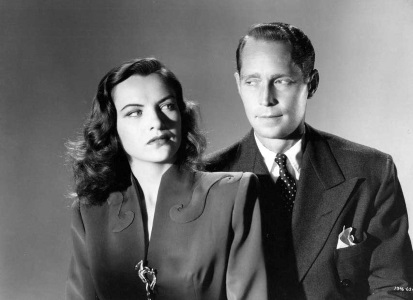Phantom Lady
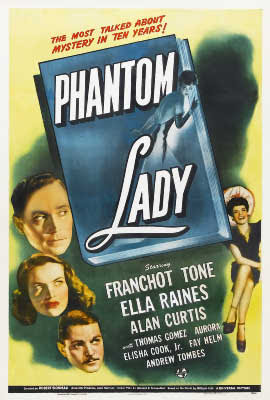
Director: Stuart Rosenberg
Year: 1944
Rating: 7.0
Based
on a Cornell Woolrich novel from 1942 it was adapted by Universal and the
directing reins were handed over to Robert Siodmak. Siodmak was yet another
Jewish emigree who had left Germany when Hitler came to power. First to France
where he directed a few films and then to Hollywood. This was the film that
established him in Hollywood and led to his directing a number of crime and
suspense films - The Killers, The Dark Mirror. This is an odd film with an
off-beat structure. The top-billed actor doesn't make an appearance until
the 45-minute mark and the initial male protagonist that you assume will
be the main character gets sidelined 20-minutes in and basically leaves the
film. It then falls onto a female character to carry the narrative. Woolrich
often made women the center of his novels and over 300 short stories (The
Bride Wore Black) - as the killer or victim - in the book she never gives
up and is relentless in running down potential leads and willingly puts herself
in danger.
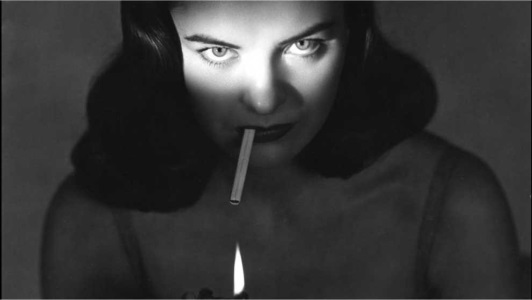
The script is fairly trite with more holes
than a moth-eaten coat - and though this is often classified as "noir", the
plot is your basic crime story. There is no femme fatale and really no mystery
as to the killer or whether the accused man is innocent - these are spoon
fed to us like cream-filled cupcakes. It is Siodmak's cinematography that
turns it into a noir film. Dark, shadowy, empty streets, long shots with
elements of his German black and white expressionism. There are shots and
scenes that make the little noir toes on your feet curl up with happiness.
He takes a mundane story and turns it on its head. It can't escape the plot
but it will leave a lasting impression. Film noir was still in its formative
years with The Maltese Falcon, Stranger on the Third Floor coming before
it and Murder My Sweet being released in the same year, but this clearly
had an influence on how noir was to look in the films to come.
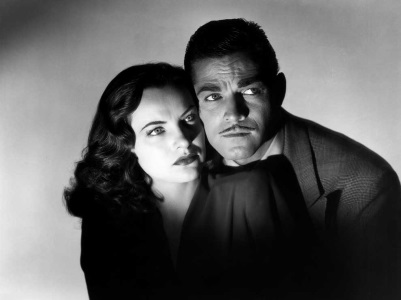
Scott Henderson (Alan Curtis) has a fight
with his wife and goes to have a drink in a bar. He has two tickets to a
show and when he sees a single woman at the end of the bar, he convinces
her to go with him. He is not a great reader of the room. She is obviously
miserable, and he keeps at her until she agrees. This fault is made clearer
later on when it is obvious that he never realized that his secretary loves
him. The woman (Fay Helm) has a crazy high hat with a big feather on top.
Doesn't even take it off when she sits down. The singer on stage (Aurora
Miranda) is also wearing the same hat and comes across as a Carmen Miranda
type - not too surprising since Aurora was her real-life sister. On the stage
is also a drummer played by Mr. Noir Elisha Cook Jr. who keeps staring and
grinning at the lady. After the show, Henderson takes her back to a bar and
never gets her name. When he gets home the cops are waiting for him. His
wife has been murdered. With his necktie.
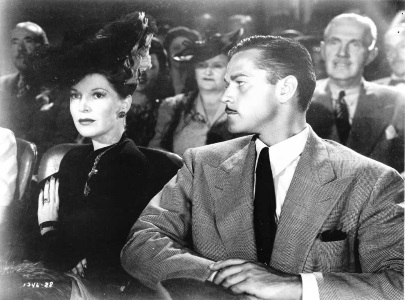
Which seems to be all the jury needs to
find him guilty. He can't find the woman to corroborate his alibi. Kind of
stupid since the bartender and taxi driver can but they don't remember the
woman. He must have had a lousy lawyer. His secretary Carol who has secretly
loved him decides to find the woman before he is executed. She doesn't have
long. She is played by the lovely Ella Raines who had been signed to an exclusive
contract by Howard Hughes and Charles Boyer. This is her film.
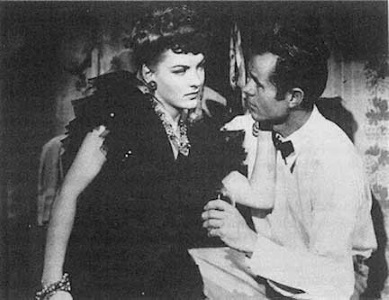
First, she obsessively shows up at the bar
and stares at the bartender driving him crazy and Siodmak pulls the camera
far back looking down the bar where she appears to be an avenging angel.
Just staring. But the stand-out scene that is remarkable and surprisingly
got thru the censors is when she dresses up as a 10-cent a dance tart and
gives Cook the look of sex. He takes her to this very small after-hours jazz
club where he beats his drum like a man coked up to his temple and thinking
he has a sure thing. His eyes are flying around like banshees, his hands
a blur, his smile in a fixed maniacal grin of victory. It is an astonishing
few minutes of film with the camera going haywire jumping around like a claustrophobic
madman. Then back to his place where she sits on his lap and tries to coax
the truth out of him. The top-billed actor Franchot Tone finally shows up
at the half-way mark. He is a good friend of Henderson but has been out of
the country. He offers to help. Thomas Gomez plays the cop who investigated
the case but feels he missed something and won't let it go. Woolrich did
not work on the film script. He had been in Hollywood years earlier and hated
it and came home to NYC and his mother. They make a few changes from the
book which is pretty good though I think a little long-winded. In the book,
Henderson and Carol are already lovers when his wife is murdered but I would
guess this would not pass the morality police at the time. And the ending
is very different and it is too bad they didn't go with the book. She puts
her life on the line to save the man she loves. The best part of the book
is her scene with the drummer - incredibly intense and nightmarish. Woolrich
throws in a few more murders as well.
